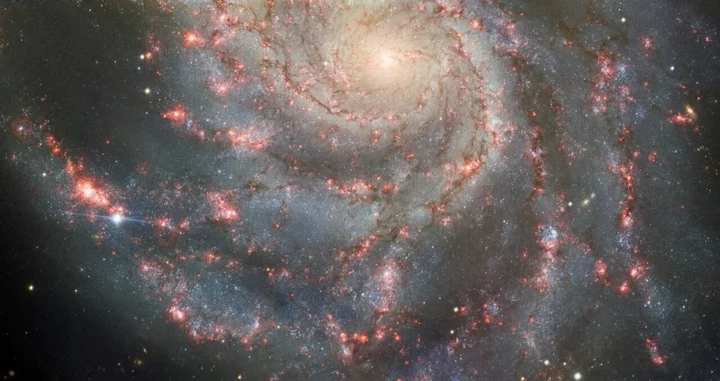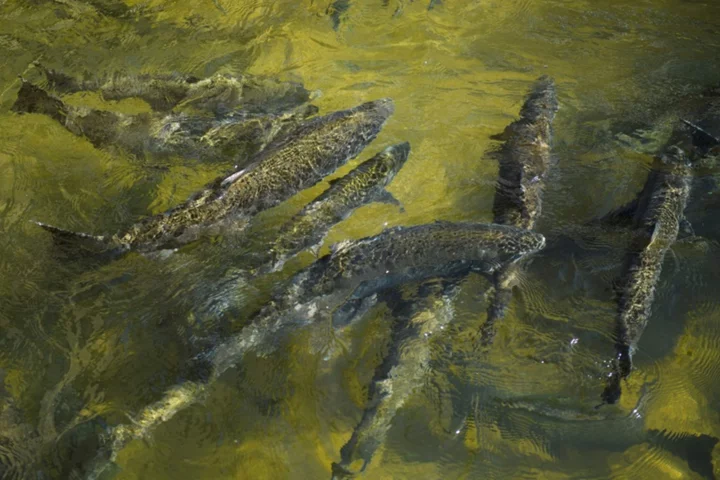Toxic algae is killing hundreds of dolphins and sea lions washing up on California beaches
Toxic algae are killing hundreds of dolphins and sea lions which are then washing up on beaches in Southern California. The National Oceanic and Atmospheric Administration (NOAA) has said that more than 1,000 animals have grown sick or died just this month. While algal blooms may be a seasonal problem, the climate crisis could be making the issue worse. More than 200 reports of animals in distress reach rescue groups every day. Biological sciences professor at the University of Southern California, David Caron, told the BBC that “I’ve heard of a number of people walking the beaches who have seen [sick] animal after [sick] animal”. “Animal rescue groups are scrambling to try to get boots on the ground to get the animals protected,” he added. Sea birds, dolphins, and sea lions are growing ill because of the expansion of some algae-producing domoic acid, a toxin. Dr Caron told the BBC that the algal blooms disrupt food webs. Shellfish, anchovies, and sardines eat the harmful materials before being eaten by animals further up the food chain. “They eat a meal of those highly toxic fish and then they become toxified themselves, and if they get enough of that material, it of course can kill them, which is happening now,” he said. NOAA states that Santa Barbara and Ventura counties are among the worst affected. The Channel Islands Marine & Wildlife Institute co-founder Ruth Dover said in a statement, “We are doing the best we can to keep up with the intense pace,” of reports of marine mammals in distress. Domoic acid can make animals disoriented or they may even convulse and die while under the surface. The blooms may be harmful to humans as well since people may grow ill if they eat fish that have toxins. But the California Department of Public Health monitors such levels and will shut down shellfish beaches when needed, Dr Caron noted. People could also attempt to approach larger marine mammals, such as sea lions and dolphins if they’re stranded on land, but the animals may be aggressive under the influence of the toxins. Marine animals should be avoided, and people should instead call for the help of rescue groups. Some animals have been rescued after being captured and fed. After they have been provided with liquids, the animals may be able to flush the toxins out. The algae blooms usually take place between March and June in California, but the long winter means that the blooming is occurring later in the season. Experts have noted that while not all kinds of algae are harmful, more of those that are dangerous are spreading to new areas because of the climate crisis. Higher water temperatures mean that larger areas are now habitable for the algae. Dr Caron said scientists are attempting to fully understand the effects of the climate crisis on organisms living along coastlines. “But we have a fair amount of evidence, especially in inland waters, that climate change is exacerbating some of the problems that we’re seeing with harmful algae,” he told the BBC. Read More To restore reefs dying in warming seas, UAE turns to coral nurseries Poland, Germany discuss avoiding repeat of deadly river pollution but ready for all scenarios Chesapeake Bay report cites environmental justice disparities How deep is the ocean and what’s at 3,900 metres? How deep is the ocean and what’s at 3,900 metres? Tropical Storm Bret’s hurricane forecast downgraded but Caribbean remains on alert
Toxic algae are killing hundreds of dolphins and sea lions which are then washing up on beaches in Southern California.
The National Oceanic and Atmospheric Administration (NOAA) has said that more than 1,000 animals have grown sick or died just this month.
While algal blooms may be a seasonal problem, the climate crisis could be making the issue worse.
More than 200 reports of animals in distress reach rescue groups every day.
Biological sciences professor at the University of Southern California, David Caron, told the BBC that “I’ve heard of a number of people walking the beaches who have seen [sick] animal after [sick] animal”.
“Animal rescue groups are scrambling to try to get boots on the ground to get the animals protected,” he added.
Sea birds, dolphins, and sea lions are growing ill because of the expansion of some algae-producing domoic acid, a toxin.
Dr Caron told the BBC that the algal blooms disrupt food webs. Shellfish, anchovies, and sardines eat the harmful materials before being eaten by animals further up the food chain.
“They eat a meal of those highly toxic fish and then they become toxified themselves, and if they get enough of that material, it of course can kill them, which is happening now,” he said.
NOAA states that Santa Barbara and Ventura counties are among the worst affected.
The Channel Islands Marine & Wildlife Institute co-founder Ruth Dover said in a statement, “We are doing the best we can to keep up with the intense pace,” of reports of marine mammals in distress.
Domoic acid can make animals disoriented or they may even convulse and die while under the surface.
The blooms may be harmful to humans as well since people may grow ill if they eat fish that have toxins. But the California Department of Public Health monitors such levels and will shut down shellfish beaches when needed, Dr Caron noted.
People could also attempt to approach larger marine mammals, such as sea lions and dolphins if they’re stranded on land, but the animals may be aggressive under the influence of the toxins.
Marine animals should be avoided, and people should instead call for the help of rescue groups. Some animals have been rescued after being captured and fed. After they have been provided with liquids, the animals may be able to flush the toxins out.
The algae blooms usually take place between March and June in California, but the long winter means that the blooming is occurring later in the season.
Experts have noted that while not all kinds of algae are harmful, more of those that are dangerous are spreading to new areas because of the climate crisis.
Higher water temperatures mean that larger areas are now habitable for the algae. Dr Caron said scientists are attempting to fully understand the effects of the climate crisis on organisms living along coastlines.
“But we have a fair amount of evidence, especially in inland waters, that climate change is exacerbating some of the problems that we’re seeing with harmful algae,” he told the BBC.
Read More
To restore reefs dying in warming seas, UAE turns to coral nurseries
Poland, Germany discuss avoiding repeat of deadly river pollution but ready for all scenarios
Chesapeake Bay report cites environmental justice disparities
How deep is the ocean and what’s at 3,900 metres?
How deep is the ocean and what’s at 3,900 metres?
Tropical Storm Bret’s hurricane forecast downgraded but Caribbean remains on alert









